Abstract
The discriminatory power of four methods for typing of Listeria monocytogenes was compared. The four methods were multilocus enzyme electrophoresis (MEE), ribotyping, restriction enzyme analysis (REA), and a newly developed Danish phage typing system. Ninety-nine human clinical, food and slaughterhouse isolates of Listeria monocytogenes were typed by each method. The most discriminatory single typing method was phage typing with an overall discriminatory index (DI) of 0.88 followed by REA, MEE and ribotyping with DI-values at 0.87, 0.83 and 0.79 respectively. Considering strains from each of the two predominant O-serotypes alone, serotype 1 was best discriminated by the molecular typing methods, in particular REA, which showed a DI of 0.92. The serotype 4 strains were best discriminated by phage typing (DI = 0.78). If two or more typing methods were combined, the combination of REA and MEE were found to be the most discriminatory combination. The DI values were 0.96, 0.74 and 0.90 for serotype 1, 4, and both combined, respectively. Phage typing is a rapid and inexpensive typing method but not as reproducible as the molecular typing methods. It is the most suitable method for mass screening. In situations where results are required to be highly reliable, i.e. when studying the relationships between only a few strains, a single or a combination of molecular typing methods should be used, preferable MEE and REA.
Full text
PDF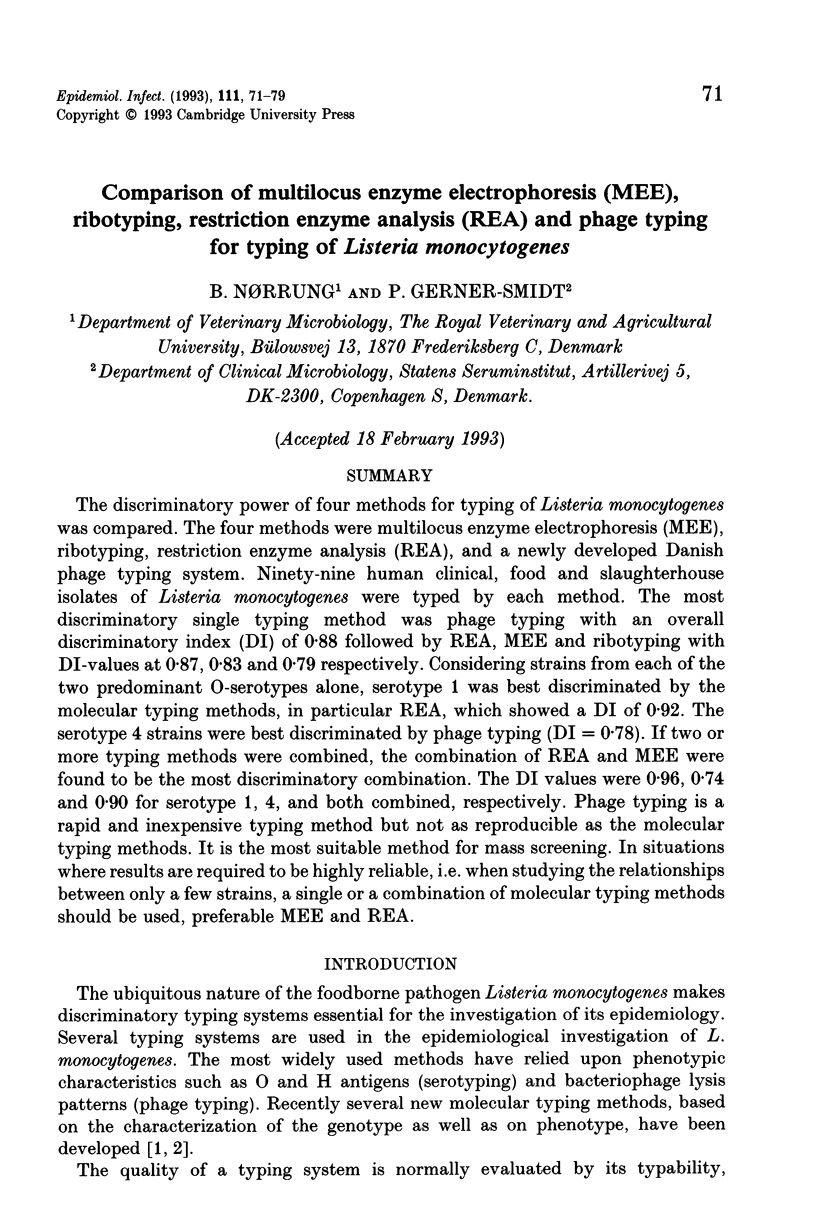
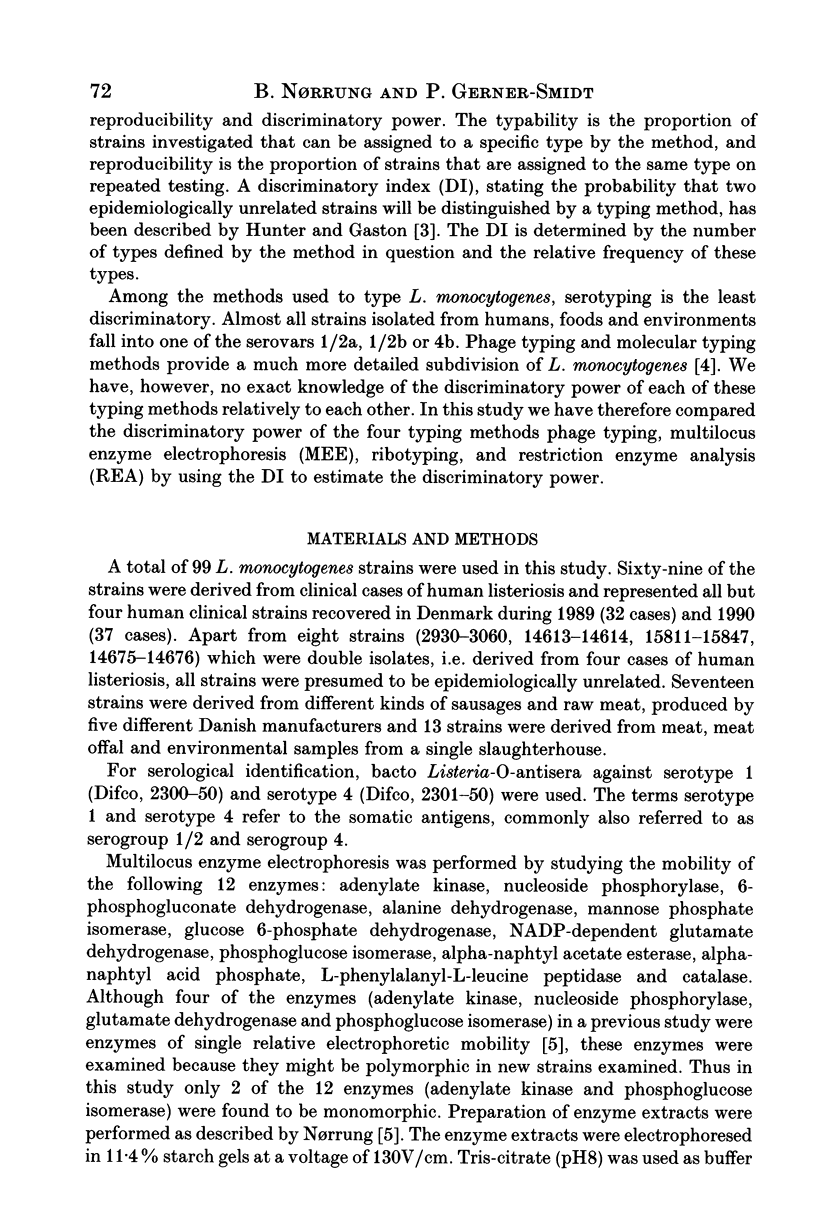
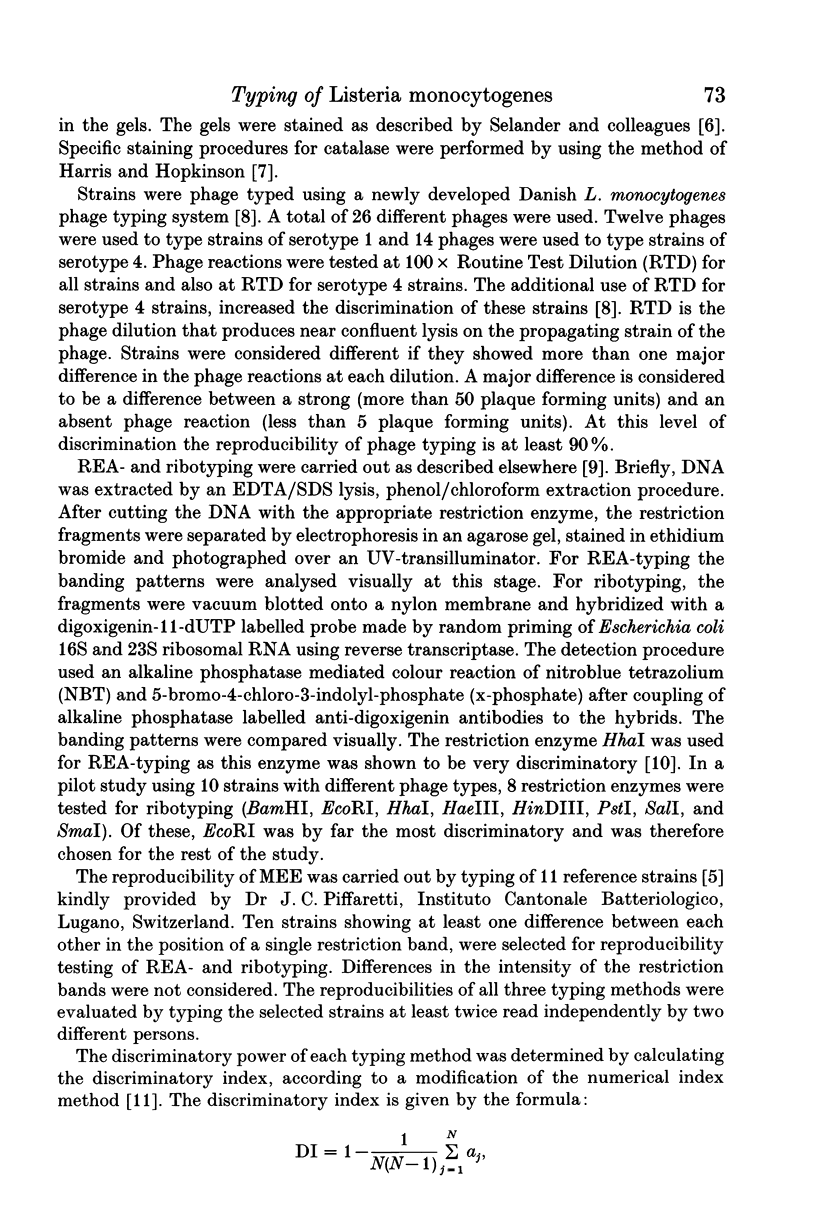
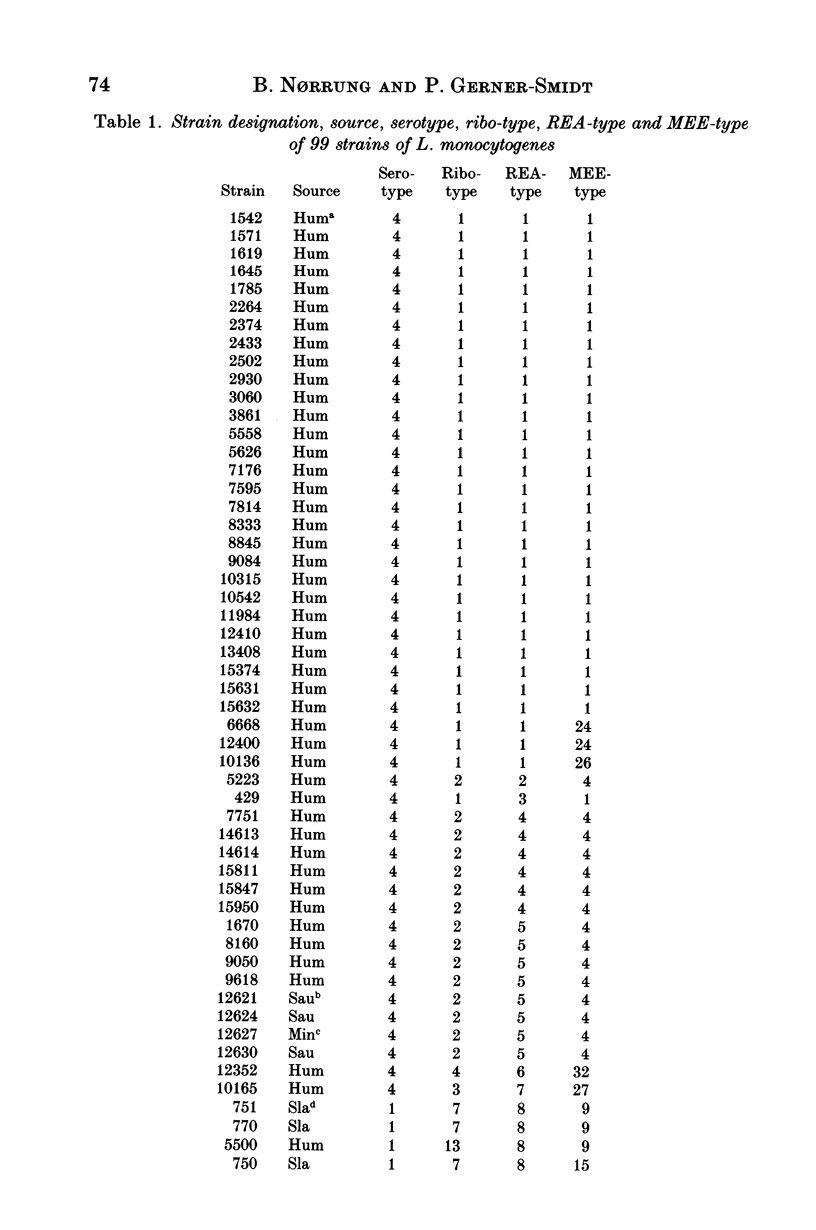
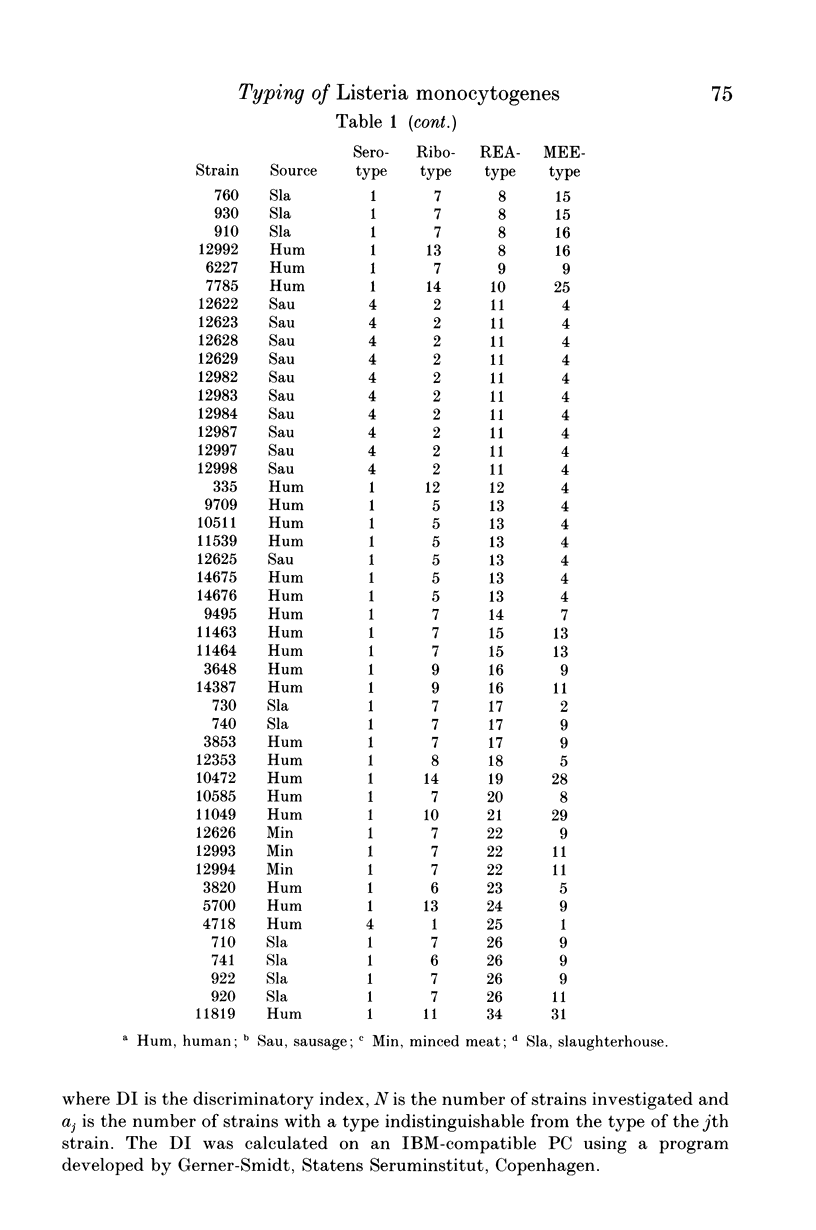
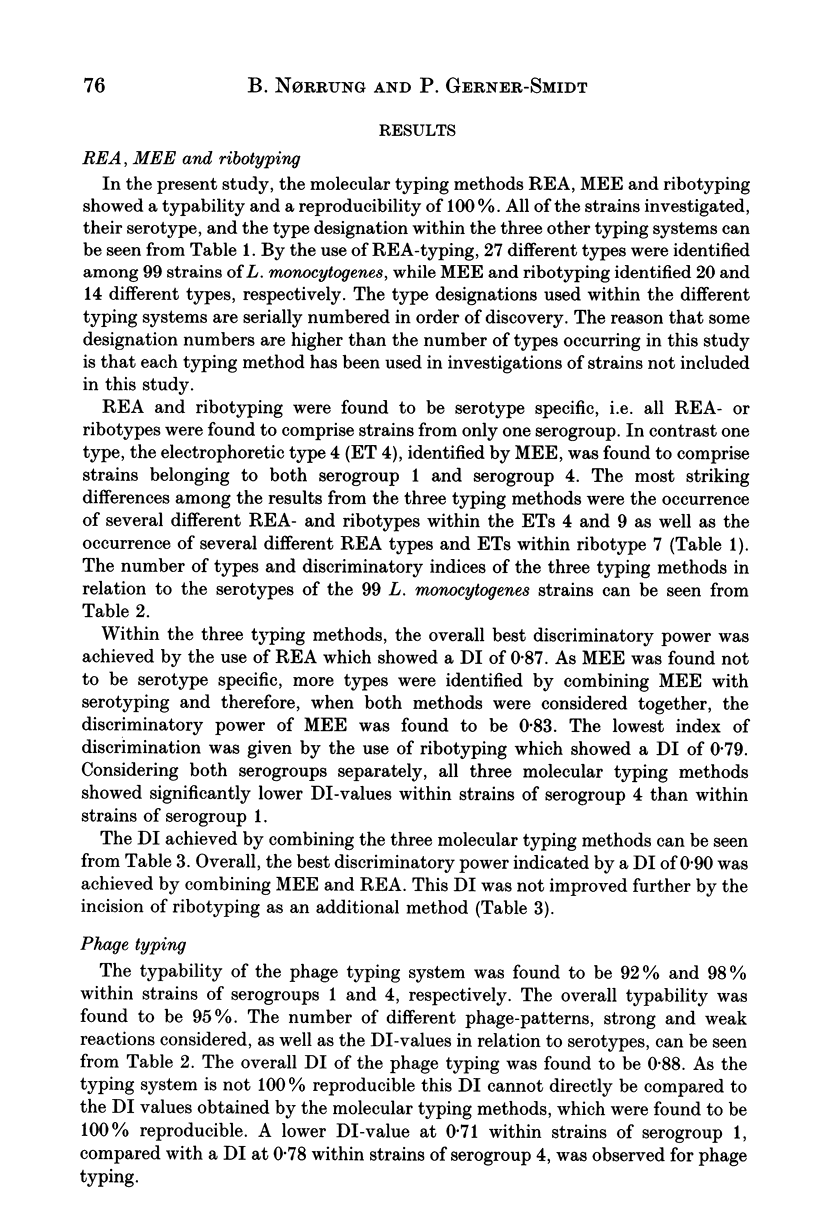
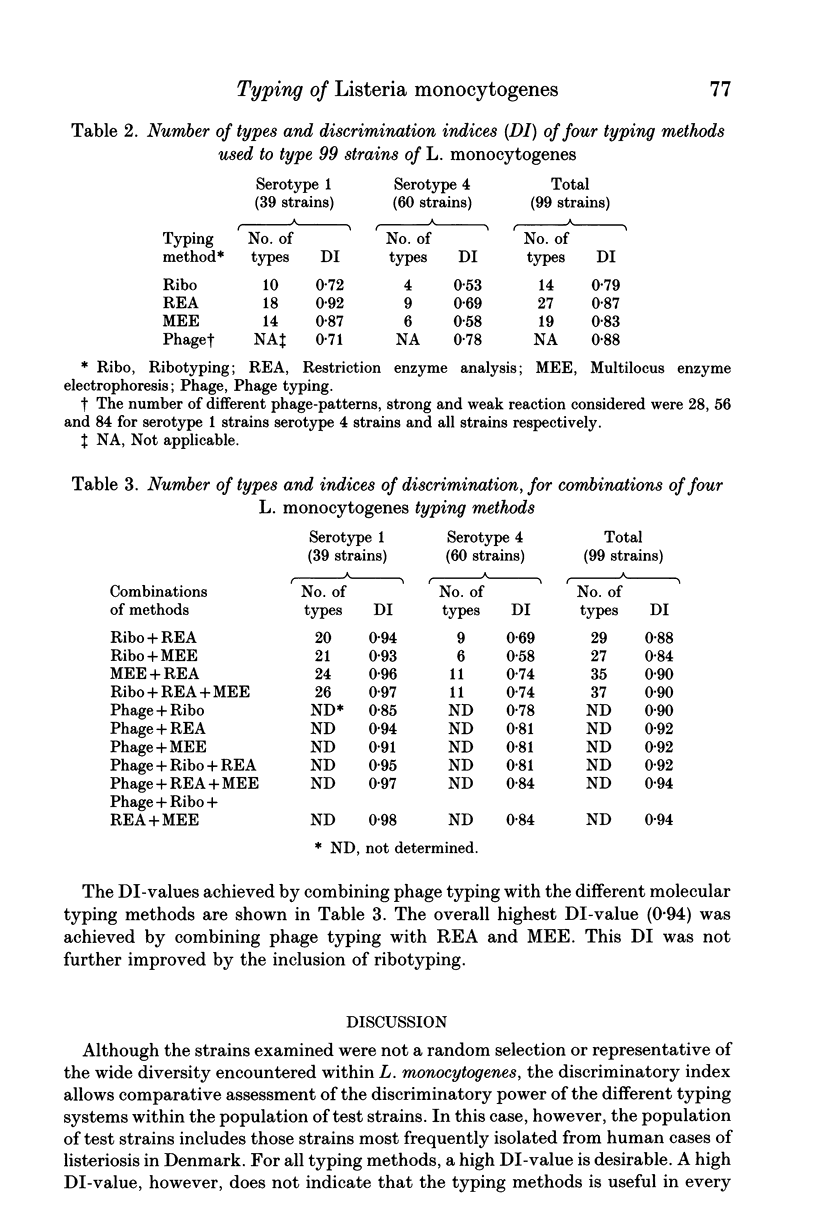
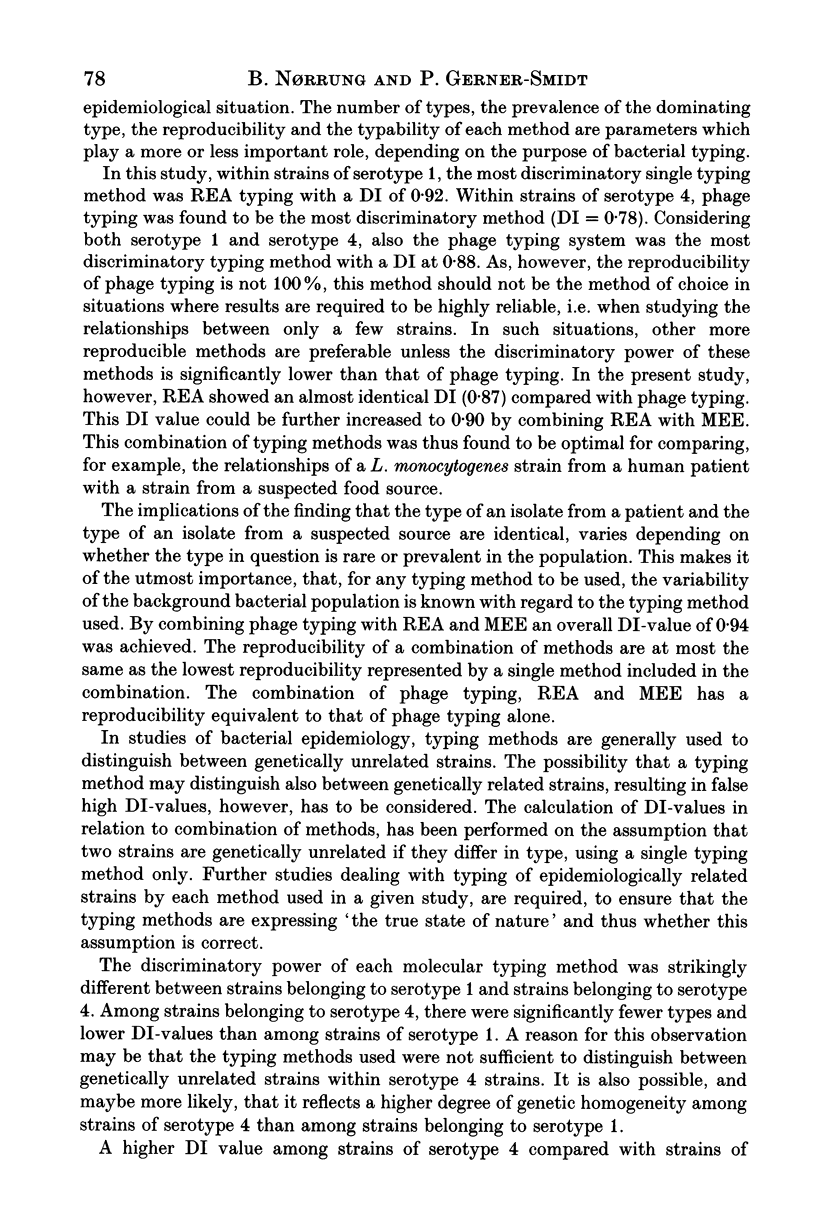
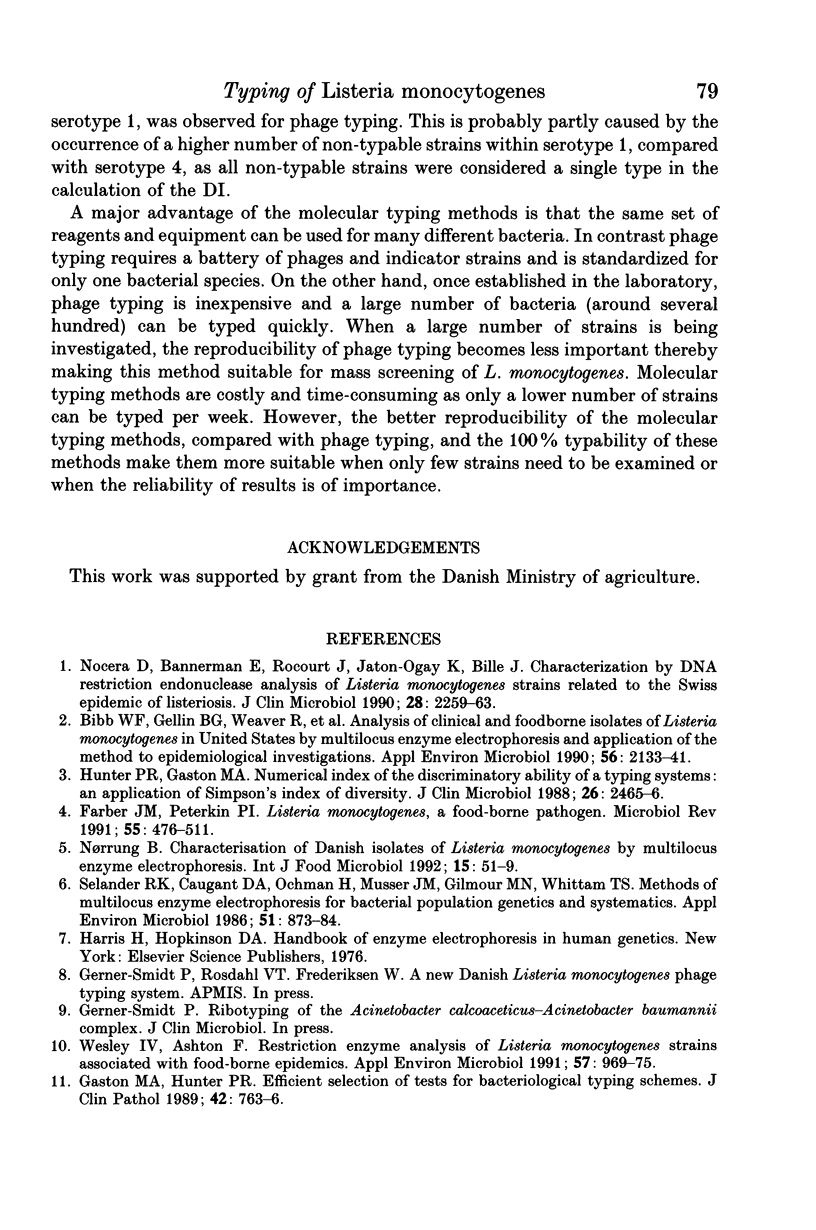
Selected References
These references are in PubMed. This may not be the complete list of references from this article.
- Bibb W. F., Gellin B. G., Weaver R., Schwartz B., Plikaytis B. D., Reeves M. W., Pinner R. W., Broome C. V. Analysis of clinical and food-borne isolates of Listeria monocytogenes in the United States by multilocus enzyme electrophoresis and application of the method to epidemiologic investigations. Appl Environ Microbiol. 1990 Jul;56(7):2133–2141. doi: 10.1128/aem.56.7.2133-2141.1990. [DOI] [PMC free article] [PubMed] [Google Scholar]
- Farber J. M., Peterkin P. I. Listeria monocytogenes, a food-borne pathogen. Microbiol Rev. 1991 Sep;55(3):476–511. doi: 10.1128/mr.55.3.476-511.1991. [DOI] [PMC free article] [PubMed] [Google Scholar]
- Gaston M. A., Hunter P. R. Efficient selection of tests for bacteriological typing schemes. J Clin Pathol. 1989 Jul;42(7):763–766. doi: 10.1136/jcp.42.7.763. [DOI] [PMC free article] [PubMed] [Google Scholar]
- Hunter P. R., Gaston M. A. Numerical index of the discriminatory ability of typing systems: an application of Simpson's index of diversity. J Clin Microbiol. 1988 Nov;26(11):2465–2466. doi: 10.1128/jcm.26.11.2465-2466.1988. [DOI] [PMC free article] [PubMed] [Google Scholar]
- Nocera D., Bannerman E., Rocourt J., Jaton-Ogay K., Bille J. Characterization by DNA restriction endonuclease analysis of Listeria monocytogenes strains related to the Swiss epidemic of listeriosis. J Clin Microbiol. 1990 Oct;28(10):2259–2263. doi: 10.1128/jcm.28.10.2259-2263.1990. [DOI] [PMC free article] [PubMed] [Google Scholar]
- Nørrung B. Characterisation of Danish isolates of Listeria monocytogenes by multilocus enzyme electrophoresis. Int J Food Microbiol. 1992 Jan-Feb;15(1-2):51–59. doi: 10.1016/0168-1605(92)90135-p. [DOI] [PubMed] [Google Scholar]
- Selander R. K., Caugant D. A., Ochman H., Musser J. M., Gilmour M. N., Whittam T. S. Methods of multilocus enzyme electrophoresis for bacterial population genetics and systematics. Appl Environ Microbiol. 1986 May;51(5):873–884. doi: 10.1128/aem.51.5.873-884.1986. [DOI] [PMC free article] [PubMed] [Google Scholar]
- Wesley I. V., Ashton F. Restriction enzyme analysis of Listeria monocytogenes strains associated with food-borne epidemics. Appl Environ Microbiol. 1991 Apr;57(4):969–975. doi: 10.1128/aem.57.4.969-975.1991. [DOI] [PMC free article] [PubMed] [Google Scholar]


